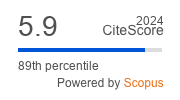Article | Open Access
Securing the Youth Vote: A Comparative Analysis of Digital Persuasion on TikTok Among Political Actors
| Views: | 13414 | | | Downloads: | 11308 |
Abstract: In the context of “pop politics” and “politainment,” the irruption of TikTok has changed the landscape of social media and become the fastest-growing application among young people. Based on the peculiarities of the social platform’s affordances and the political personalization approach, we explore the differences between political parties and political leaders in terms of digital persuasion on TikTok in Spain and Poland. This work contributes to the scarce knowledge about the strategic use of TikTok for political purposes. It also attempts to fill the gap in the comparative research into the practical uses of TikTok in different political contexts. The study explores the three classical persuasion appeals—pathos, ethos, and logos—based on a visual, quantitative analysis of N = 372 videos posted on the official TikTok profiles of the main political parties and leaders from January 1st to March 31st, 2022. Differences were found in how political parties and political leaders used TikTok’s affordances as well as in the main rhetorical resource they use to persuade. We noted the use of more rational resources (logos) in the case of political parties and more emotional resources (pathos) for political leaders. Further, the rare presence of the personality in the videos of the political actors (ethos), along with their unusual privatization role, indicate that personalization on TikTok is far from being considered as part of their digital persuasion strategy.
Keywords: digital persuasion; personalization; political communication; social media; TikTok; visual framing
Published:
© Rocío Zamora-Medina, Andrius Suminas, Shahira S. Fahmy. This is an open access article distributed under the terms of the Creative Commons Attribution 4.0 license (http://creativecommons.org/licenses/by/4.0), which permits any use, distribution, and reproduction of the work without further permission provided the original author(s) and source are credited.


